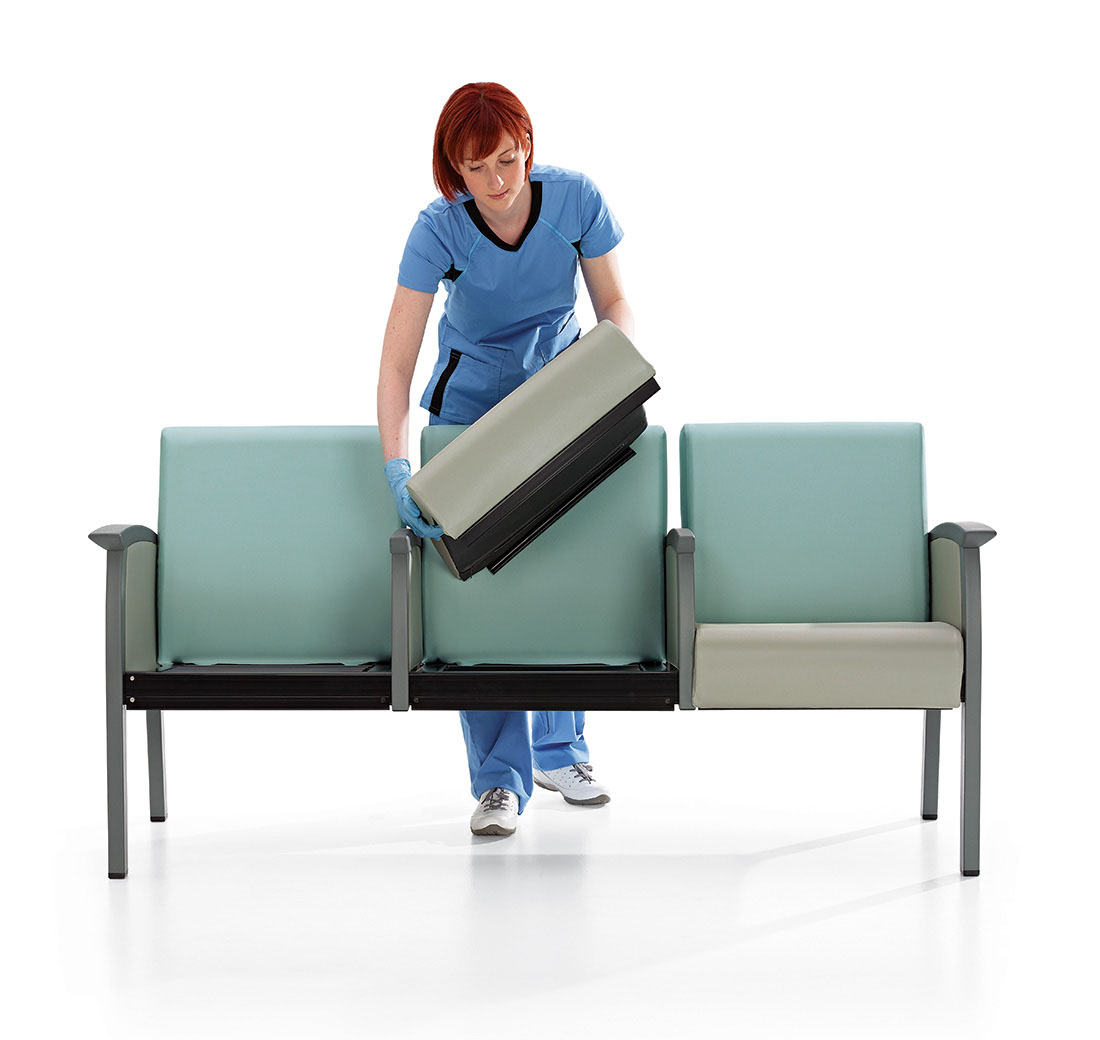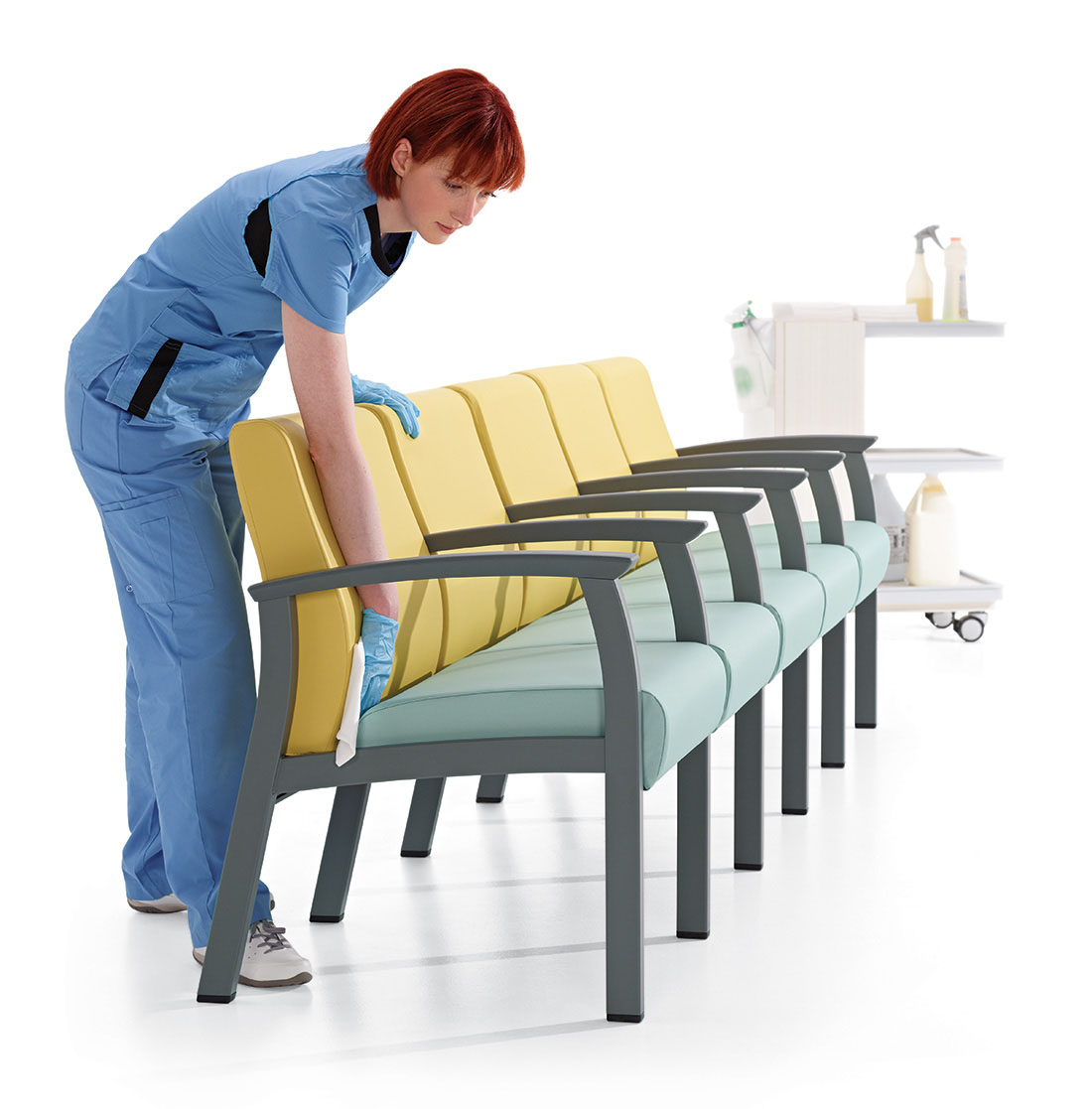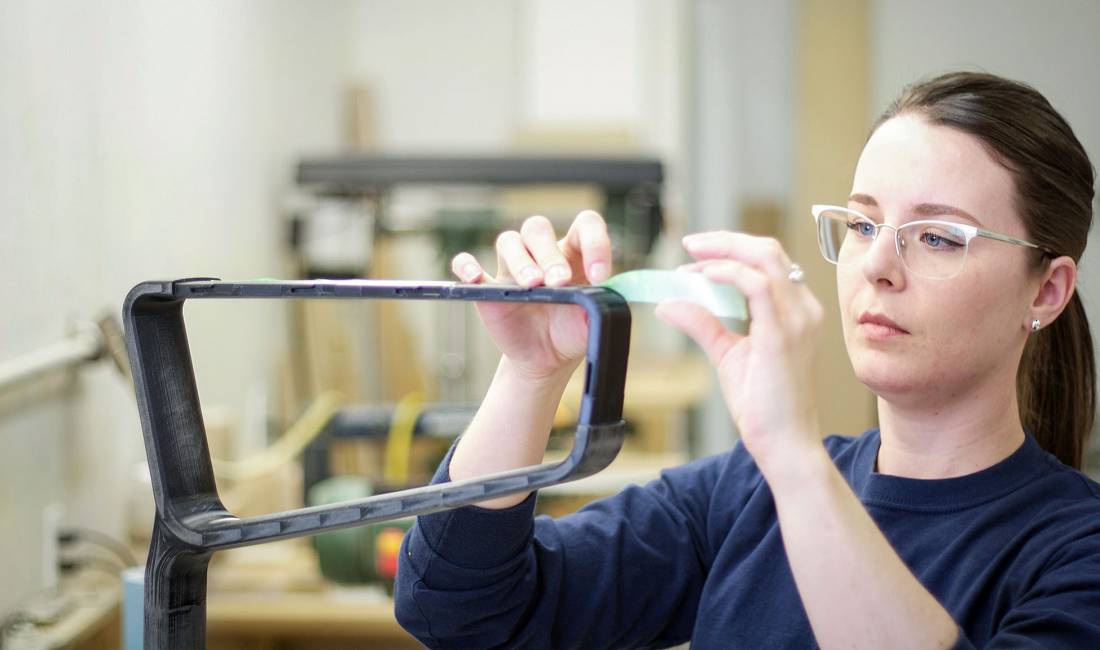Healthcare Furniture: The Silent Hero in Hospitals
Trend | February 06, 2018 | Beatriz Sanchez
In the past, aesthetic and cost were the main influence in the furnishing of hospital lounge areas and inpatient rooms. However, when furnishing the hospitals of today, focus has shifted from what pleases the eye, to what helps in the battle against health-care associated infections.
Health-care associated infections (HAIs) are infections patients acquire in the hospital while receiving medical treatment. An estimated 722,000 HAIs occur in U.S. hospitals every year, and over 10% of those patients die during their hospitalizations. In an effort to combat these infections, hospitals implement prevention practices.
These prevention practices include buying the right type of furniture for the healthcare environment. Since most HAIs are transmitted through contact with microbe-infected hospital objects, implementing specially designed furniture can reduce these infections by 70 percent.
But, within this new construction, what makes a piece of furniture “the right kind” to play a role in infection control?
For starters, its materials.
When seats are covered in standard fabrics, bodily fluids or spills may seep right into the foam and become a breeding ground for germs. However, should furniture be upholstered with appropriate material, the risk of HAIs decreases. Vinyls and polyurethanes are both impenetrable to liquids—ensuring the foam within stays protected—and drastically reduces the risk of infection through environmental microbial transmission.
In addition to vinyls and polyurethanes, another appropriate fabric option for healthcare includes Crypton, a blended, water-resistant upholstery. Along with Crypton, Nano-Tex, an upholstery treatment that provides a spill and stain-resistant finish, and DuraBlock, a moisture barrier that goes beneath regular upholstery, are available alternatives effective in preventing moisture from reaching the foam.

Since resistant organisms can live for months on inanimate surfaces if not cleaned properly, materials used in healthcare furniture need to be easy to clean and disinfect. However, not all surfaces are compatible with hospital-grade disinfectants, and most materials break down when exposed to harsh cleaning products.
To combat, materials need to be made or covered with fluid-resistant, non-porous fabrics like metal and hard plastics. These prevent bleach cleaners from cracking and tearing the surface.
Though new technologies are being developed that allow porous surfaces, such as wood, to be treated with bacterial-inhibiting silver ions, for the time being, hospitals are sticking with non-porous fabrics.

Aside from materials, the furniture’s overall design is taken into account.
Seating needs to have an open wipe-out space between the seat and back so anything ranging from bodily fluids to regular trash can be easily wiped to the floor, preventing the accumulation of germs and bacteria within the crevice at the back.
For infection control purposes, chair arms are covered with nonporous materials, such as urethane armcaps. Unlike wood and upholstered armcaps, they are extremely easy to clean and are the best option for keeping chair arms from becoming a highly contaminated area.
Healthcare furniture may not be top of the mind when patients enter a hospital, but whether or not they know it, beds and chairs play a heroic role during their stay. Their part in the battle against health-care associated infections may not get enough credit, but that’s alright.
Some heroes prefer to stay anonymous.
Enjoy this article? Don't forget to share.






